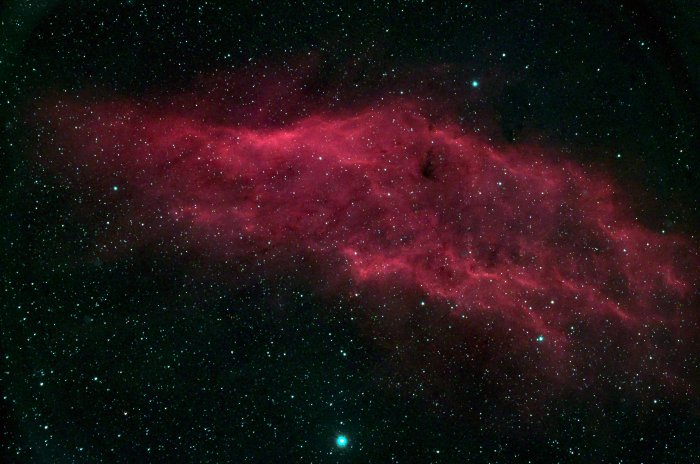
The
California Nebula (NGC 1499) is an emission nebula located in the constellation Perseus. It is so named because it appears to resemble the outline of the US State of California on long exposure photographs. It is almost 2.5° long on the sky and, because of its very low surface brightness, it is extremely difficult to observe visually. It can be observed with a Hα filter (isolates the Hα line at 656 nm) or Hβ filter (isolates the Hβ line at 486 nm) in a rich-field telescope under dark skies. It lies at a distance of about 1,000 light years from Earth. Its fluorescence is due to excitation of the Hβ line in the nebula by the nearby prodigiously energetic O7 star, Xi Persei
IC 443 may be the remains of a supernova that occurred 3,000 - 30,000 years ago. IC 443 is one of the best-studied cases of supernova remnants interacting with surrounding molecular clouds.
A total of 3 hours and 20 min. exposure.
| Exposure | 10@1200 sec |
| ISO | 800 |
| Camera | Nikon Z7 [8856 x 5504] |
| Optics | Skywatcher Esprit 120mm Refractor |
| Filter | Radian Triad Ultra Quad-Band Narrowband Filter |
| Guiding | Phd2 using a ZWO 224MC on an Orion 60x240mm Guide scope |
| Controller | Images taken using Kstars on an Odroid-N2 (Raspberry Pi clone) |
| Location | Lower Sackville, Nova Scotia. |
| Date | 2021-03-24 |
| PixInsight Processing | | WeightedBatchPreprocessing Script | | Dynamic Crop | | Automatic Background Extractor | | MultiscaleLinearTransform | | HistogramTransform | | CurvesTransformation | | LocalHistogramEquilization |
|
| Further tweaking for colour in Lightroom |

